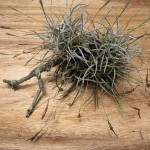© guy leblanc 2015-2019 all rights reserved
Ball moss and mistletoe are two common tree pests in Central Texas that are frequently removed during tree pruning. Here is some info on what these plants are, how they are harmful and how they can be treated.

ball moss
Ball moss is not really a moss, but an epiphyte or air plant, meaning it’s roots are exposed to the air. It is in the bromeliad family, and so is related to pineapples, believe it or not. While the majority of experts believe it is not harmful, because it is believed to receive its nutrition entirely through air and rain, some arborists including me believe that in large quantities ball moss definitely has a negative impact on trees. This is due to its shading out buds and young leaves. There is definitely a major impact when we have ice storms, as the greatly increased surface area causes much more breakage on limbs coated with ball moss.
There are really only two ways to deal with ball moss. Manually remove it, or spray it with chemicals. Manual removal is the far superior technique, as it can be extremely thorough and can address any pruning needs at the same time, while eliminating the side effects of chemical use. However, it is far more expensive, usually more than five times the cost. Another problem with manual removal is that the average tree service’s unskilled climbers often remove too much foliage or damage a lot of the tree bark when removing ball moss.
Spraying is usually accomplished with one of three chemicals. Baking soda is one of them, and while it sounds benign, its high salt content and pH can be harmful to soils. It is also not nearly as effective as copper hydroxide. This chemical can be harmful to young foliage and is toxic to aquatic life however. A third salt, potassium bicarb, while extremely effective, is extremely expensive, and actually not labeled for this use. Unfortunately, none of these chemicals will kill more than about 70% of the moss, usually killing only about half, and the moss remains on the tree for months or even years until it finally rots off. With manual removal, it is gone instantly.
Mistletoe is undoubtedly a parasitic plant and harmful to trees. Its root system (haustoria) is in the wood of the tree, drawing water and some nutrients from it. It can also cause a weakness of the tree branch it is attached to. In these ways, mistletoe causes significant problems for trees and should be removed annually. There really is no spray option for mistletoe. While there is a spray on the market, it only defoliates the parasite; it doesn’t actually eradicate it. And it can wreak havoc on understory plants. So manual removal is the only practical option here. Unfortunately, complete removal is not possible once the mistletoe is severely entrenched in larger tree limbs. Smaller limbs that are infected should be completely removed.
For more information about why you should choose Arbor Vitae Tree Care for these and other tree care needs, visit one of my web pages. To set up a consultation call 512-301-8700.
